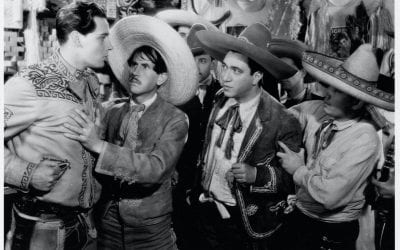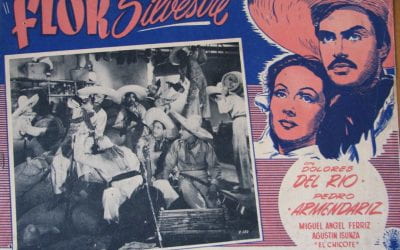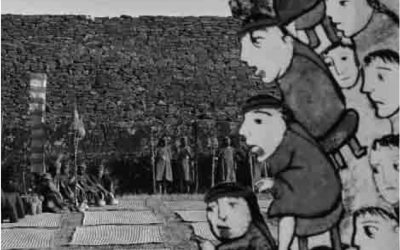First Take: Film in Latin America
An Introduction
Latin America cinema has undergone a remarkable transformation since the mid-1990s, with Argentina, Brazil, Chile, Cuba and Mexico in particular emerging as vibrant centers for some of the most innovative and imaginative filmmaking in contemporary world cinema. A bastion for politically charged counter-cinema in the 1960s and 1970s, Latin American filmmaking entered a long transitional period during the 1980s that abruptly ended with the emergence in the 1990s of young and frequently iconoclastic directors such as Alfonso Cuarón, Lucrecia Martel, Walter Salles, Guillermo del Toro and Pablo Trapero. This new generation of incredibly talented directors has redefined what Latin American cinema means today through a body of work that offers one of the more exciting topics in recent Film Studies, as testified to by the fascinating scholarship and criticism offered in this special film issue of ReVista on which I am pleased and honored to have served as a special editorial advisor, along with Brad Epps.
Interest in Latin American cinema has been building for quite some time at Harvard University, as I discovered when I arrived here as Director of the Harvard Film Archive just about three years ago. It is particularly rewarding to include several pieces by up and coming scholars and historians of Latin American cinema from Harvard such as Humberto Delgado alongside the work of long-established and influential observers of Latin American film from the Harvard community such as Nicolau Sevcenko and visiting professor in Romance Languages and Literatures Gonzalo Aguilar. Together these writers reveal the amazing diversity of contemporary Latin American cinema and the ways in which the political legacy of the past has not been so much abandoned as reinvented in multiple and artistically fascinating ways. During my interview with legendary Argentine producer Lita Stantic I was intrigued by her reluctance to speak of a political agenda, let alone an unconscious, at work within the nuevo cine argentino. Stantic’s understanding of the new priorities of the younger generation of filmmakers and the more subtle political register of their work, offers just one example of how the contemporary cinema requires a different set of critical tools than we were previously accustomed to for studying Latin American film.
At the Harvard Film Archive we have been extraordinarily fortunate to have hosted such exciting young contemporary Latin American filmmakers as Lucrecia Martel and Carlos Reygadas as well as important veterans such as Jorge Furtado, all for extended visits and cinematheque retrospectives. These visits have taken place within the context of a larger project here at the university; we have channeled an energetic focus on building resources and interest in Ibero-American cinema at Harvard into an Ibero-American film committee which I lead together with Brad Epps, Professor of Romance Languages and Literatures and Chair of the Committee on Degrees for Studies of Women, Gender, and Sexuality here at Harvard. Many of the authors here in this issue—among them, Humberto Delgado, Daniel Aguirre, Clemence Joüet-Pastre, and Bruno Carvalho—are members of the committee and tireless promoters of film at Harvard.
At the Archive we have been steadily gathering Ibero-American films—including a major new collection of Argentine films from the 1940s-1980s, soon to be available for research and classroom screenings. Our program has worked hard to trace the constellation of Ibero-American filmmakers in active dialogue with one another by inviting the likes of the Portuguese director Pedro Costa and the two of the brightest stars in Spanish and Catalan cinema today, José Luis Guerín and Albert Serra. The support of DRCLAS has been invaluable to our efforts and initiatives designed to go beyond the traditional pattern of Eurocentric—and specifically Franco-Germanic—film studies at Harvard and recognize the growing and vibrant community of scholars at the university working on Latin American film. A major symposium is scheduled to take place this fall, on “el cine como historia”—Film as History— which will bring together a diverse group of academics, filmmakers and archivists for a discussion of the cinema’s active role as a socio-political and cultural force and which promises to be one of the more exciting events of the academic year.
So in a sense this issue of ReVista represents not a retrospective nor a conclusion, but the beginning of a dialogue.
Fall 2009, Volume VIII, Number 3
Haden Guest is the Director of the Harvard Film Archive.
Related Articles
Oscars for Mexican Filmmakers
English + Español
A couple of years ago, in 2007, the so-called Three Amigos (the filmmakers Alfonso Cuarón, Guillermo del Toro and Alejandro González Iñárritu) went up on stage for the 79th Oscar Awards presentations. Their three films (Children of Men, Pan’s Labyrinth and Babel, respectively)/Hace poco tiempo, en el año 2007, los llamados Three Amigos (los cinerealizadores mexicanos Alfonso Cuarón, Guillermo del Toro y Alejandro González Iñárritu) subieron al escenario de la 79ª premiación del Óscar. En total, sus tres películas (Children of Men, Pan’s Labyrinth y Babel, respectivamente)…
Mexico’s National Museum of Film
Mexico has a long history of filmmaking, from the silent era to the present, with some particularly prolific periods that have been stimulated by state sponsorship and international recognition. Appreciation of the results began in the 1940s, when Mexican films won prizes at…
Eréndira Ikikunari
Hucha mítetixapquia escacsi hupiringa, máteru cuiripuecha. Atahpiticha encacsi tyámu xucuparhapca ca engacsi cacapequa úquaaca imaechani engancsi cuahpequarhenga. Ma cuiripuhcu no cherheaspti. Yurhistsquiri ma enga naneni, hamemquia Eréndira arhicurhispti…




